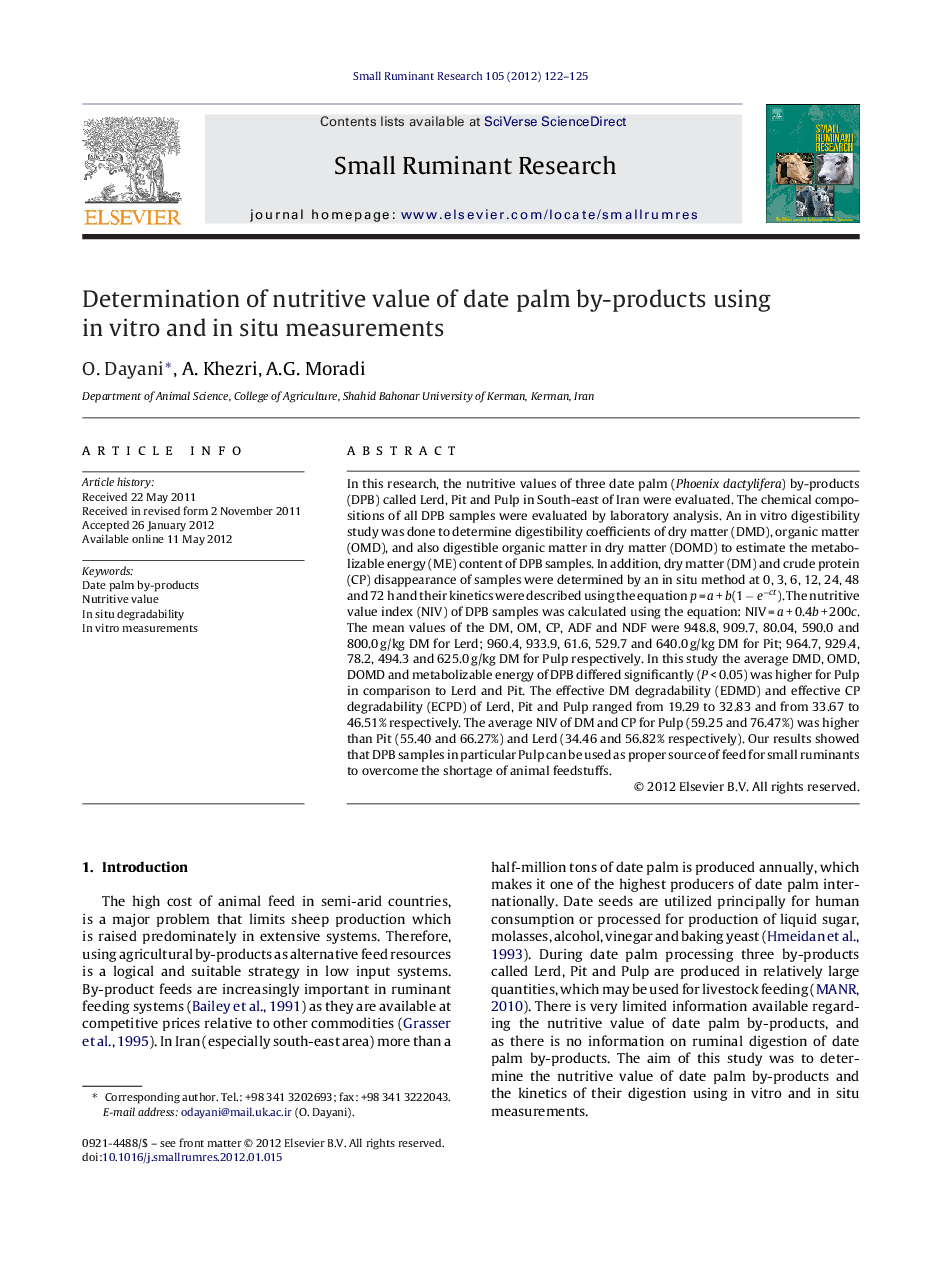| Article ID | Journal | Published Year | Pages | File Type |
|---|---|---|---|---|
| 5796123 | Small Ruminant Research | 2012 | 4 Pages |
In this research, the nutritive values of three date palm (Phoenix dactylifera) by-products (DPB) called Lerd, Pit and Pulp in South-east of Iran were evaluated. The chemical compositions of all DPB samples were evaluated by laboratory analysis. An in vitro digestibility study was done to determine digestibility coefficients of dry matter (DMD), organic matter (OMD), and also digestible organic matter in dry matter (DOMD) to estimate the metabolizable energy (ME) content of DPB samples. In addition, dry matter (DM) and crude protein (CP) disappearance of samples were determined by an in situ method at 0, 3, 6, 12, 24, 48 and 72 h and their kinetics were described using the equation p = a + b(1 â eâct). The nutritive value index (NIV) of DPB samples was calculated using the equation: NIV = a + 0.4b + 200c. The mean values of the DM, OM, CP, ADF and NDF were 948.8, 909.7, 80.04, 590.0 and 800.0 g/kg DM for Lerd; 960.4, 933.9, 61.6, 529.7 and 640.0 g/kg DM for Pit; 964.7, 929.4, 78.2, 494.3 and 625.0 g/kg DM for Pulp respectively. In this study the average DMD, OMD, DOMD and metabolizable energy of DPB differed significantly (P < 0.05) was higher for Pulp in comparison to Lerd and Pit. The effective DM degradability (EDMD) and effective CP degradability (ECPD) of Lerd, Pit and Pulp ranged from 19.29 to 32.83 and from 33.67 to 46.51% respectively. The average NIV of DM and CP for Pulp (59.25 and 76.47%) was higher than Pit (55.40 and 66.27%) and Lerd (34.46 and 56.82% respectively). Our results showed that DPB samples in particular Pulp can be used as proper source of feed for small ruminants to overcome the shortage of animal feedstuffs.
